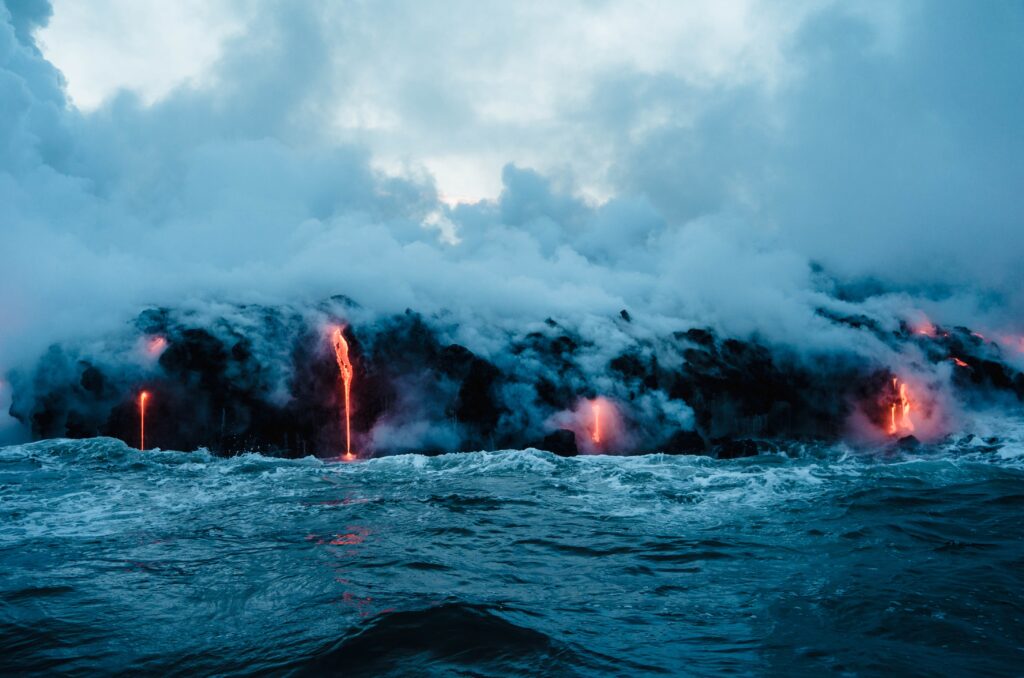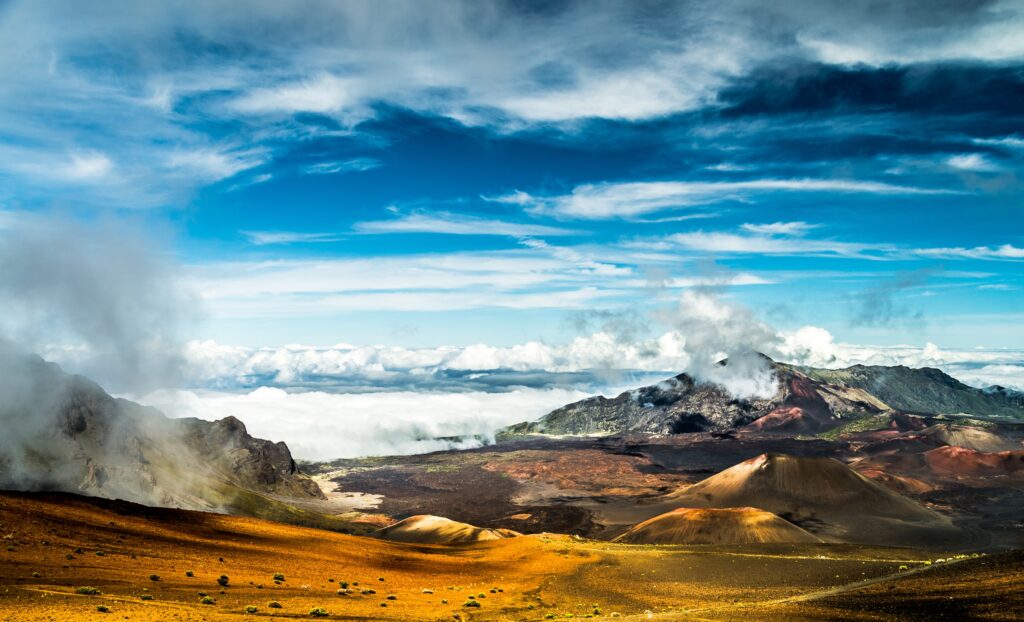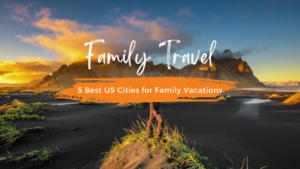The 5 Hawaii National Parks!

The 5 Hawaii National Parks!
Hawaii is home to two national parks, two National Historic Sites, three National Historical Parks, One Memorial Park, and one National Historic Trail. Each with its own unique features and points of interest. In this blog post, we will take a look at all nine of these national parks. Let’s go! Get ready to explore Hawaii Volcanoes National Park, Haleakala National Park, Pearl Harbor, and more.
1. Hawaii Volcanoes National Park:
Hawaii Volcanoes National Park is home to two active volcanoes, Kilauea and Mauna Loa. Volcanoes National Park offers diverse experiences, from volcanic activity and natural beauty to historical and cultural significance.
One of the most popular points of interest in Hawaii Volcanoes National Park is the Kilauea Visitor Center. The center introduces visitors to the park’s history, geology, and volcanic activity. Visitors can also watch the park’s live volcano cam and talk with rangers about the park’s features.
Another point of interest is the Thurston Lava Tube day hike, a cave formed by lava flow. The cave is approximately 0.75 miles long, and visitors can see the different formations that the lava has created inside the cave. The tube is a unique geological feature, and visitors can explore the cave with a ranger-led tour.
Lastly, the Jaggar Museum is another point of interest near Hawaii Volcanoes National Park. It offers educational exhibits about volcanic activity, the park’s ecosystem, and the culture of the Hawaiian people. The museum has a terrace that overlooks the Halema’uma’u crater, an active volcano; visitors can see the lava lake from there.
Be sure to visit Hawaii Volcanoes National Park during your stay in Hawaii.
2. Haleakala National Park:
This park is home to the 10,023-foot-tall Haleakala volcano and offers visitors a chance to hike, bike, and enjoy the park’s natural beauty.
One of the main points of interest in the park is the Summit Area, which is the volcano’s crater. The summit offers a panoramic view of the island, and visitors can see the different colors of the volcano’s crater, depending on the time of day. Visitors can drive to the summit or take a guided bike tour down the volcano.
Another point of interest is Hosmer Grove, a hiking trail that passes through a forest of alien trees. The trail is 1.8 miles long, and visitors can see different species of trees, such as eucalyptus, cedar, and pine. The trail also offers a beautiful view of the island, and visitors can see the different colors of the volcano’s crater.
Lastly, the Kipahulu District is another point of interest. Visitors can see the Pools of ‘Ohe’o, a series of cascading pools. Visitors can also swim in the pools and enjoy the area’s natural beauty. You can hike the Pipiwai trail, a two-mile round trip that offers a beautiful view of the island and the pools.
In our other post about Hawaii here, you can read more about this park and other things to do in Hawaii.

3. Kalaupapa National Historical Park:
This park is located on the Kalaupapa Peninsula and is the site of a former leper colony. Visitors can learn about the history of the settlement and the people who lived there.
One point of interest is the Kalaupapa Visitors Center, which provides historical information about the colony, including the story of Father Damien and Mother Marianne, who helped the patients of the colony. Visitors can also learn about the different treatments used to cure the disease.
Another point of interest is the St. Philomena Church, built by colony patients. The church is a beautiful example of the patients’ resilience and determination. Visitors can go inside the church and see the different artifacts used by the patients.
Lastly, the Kalaupapa Overlook is another point of interest, which offers a panoramic view of the peninsula. Visitors can see the different terrains of the peninsula and the different buildings used by the patients. The overlook provides a great understanding of how the patients lived and the challenges they faced.
4. Puuhonua o Honaunau National Historical Park:
This park is home to a place of refuge where ancient Hawaiians could go to escape punishment or seek sanctuary. Visitors can learn about the culture and traditions of ancient Hawaii through the park’s historical sites.
One point of interest is the Great Wall, which encloses the park. The wall is over 15 feet high and 900 feet long, marking the boundaries of the place of refuge. Visitors can walk along the wall and see the different carvings and symbols used by the ancient Hawaiians.
Another point of interest is the Place of Refuge, where visitors can see ancient Hawaiian structures and carvings. Visitors can see the different architecture of the ancient Hawaiian people and learn about the various rituals performed in the area.
Lastly, the Chief’s Hut is another point of interest. It was used by the high chief of the park, and visitors can see the different artifacts used by the chief and learn about the chief’s role in ancient Hawaiian society.
Ala Kahakai National Historic Trail Hawai’i
This National Park is about the Ala Kahakai National Historic Trail Hawai’i. This is a 175-mile trail along the coast of Hawaii that connects and preserves several historical and cultural sites.

5. Hono'uli'uli National Historic Site Hawai'i
The Honouliuli National Historic Site, located on the island of Oahu, Hawaii, is a significant site that tells the story of the internment of Japanese Americans during World War II. Besides hiking, this historic site has much to offer visitors. Here are some things to do at the Honouliuli National Historic Site:
- Take a guided tour: The National Park Service offers guided tours of the site, which provides visitors with an in-depth understanding of the history of the internment camp. Self-guided tours are also an option.
- Visit the Interpretive Center: The interpretive center provides visitors with information about the history of the internment camp and the experiences of the people who were interned there.
- See the remains of the internment camp: The site includes the remains of the internment camp, including guard towers and barracks, which provide a glimpse into the conditions in which the internees lived.
- Learn about the Japanese American experience during World War II: The Honouliuli National Historic Site provides visitors with an opportunity to learn about the experiences of Japanese Americans during World War II and the impact of the internment on their lives.
- Visit the Japanese-American Memorial: A Japanese-American Memorial is located within the site that honors the memory of the Japanese Americans who were interned during World War II.
Overall, the Honouliuli National Historic Site is a meaningful and powerful place that provides visitors with an understanding of an important chapter in American history. The site is an essential reminder of the human cost of war and the importance of civil rights.
6. Kaloko-Honokōhau National Historical Park Hawai'i
Kaloko-Honokōhau National Historical Park is a protected area located on the western coast of the island of Hawaii. It features a mix of cultural, historical, and natural resources, including ancient Hawaiian fishponds, petroglyphs, heiau (temples), scenic beaches, and wildlife such as Hawaiian monk seals and green sea turtles. The park offers opportunities for hiking, swimming, snorkeling, and learning about Hawaiian culture and history through ranger-led programs and the visitor center.
Learn about the ancient Hawaiian Fishing system by visiting the ancient fishponds. Ancient Hawaiians were some of the first fish farmers. They would use naturally found rock formations to create ponds. This would help feed entire villages.
Make sure you explore the cultural sites, including petroglyphs and heiau (temples). Petroglyphs are found in the history of every culture, and Hawaii is no different. Hawaiians would carve pictures into lava stone rocks. The meanings behind the drawings are unknown, but there are many theories about what they signify.
7. Pearl Harbor
Pearl Harbor is a harbor near Honolulu, Hawaii, on the island of Oahu. It was the site of a surprise military attack by the Japanese on December 7, 1941, which led the United States to enter World War II. The attack on Pearl Harbor resulted in significant damage to the U.S. Pacific Fleet, including the sinking of several battleships, and caused the deaths of over 2,400 Americans. Today, Pearl Harbor is remembered as a historic landmark and the site of the USS Arizona Memorial, which honors the victims of the attack and serves as a symbol of peace and reconciliation.
At the Pearl Harbor Memorial Park, you can explore the visitor center. The visitor center has a lot of cool things to see from World War II. The visitor center at Pearl Harbor is a place you can walk around while waiting for your USS Arizona Memorial time slot.
USS Arizona Memorial
You can book your USS Arizona Memorial time slot one day in advance or the same day. If you book the same day, you may risk no spots left. The USS Arizona Memorial tour is free and takes about an hour and fifteen minutes to complete. The tour includes a documentary about World War II and Pearl Harbor. After the video, you move to a boat that will take you to the USS AZ Memorial. This is a building built over the sunken ship that pays tribute to those who died and served in Pearl Harbor during the attack. It also symbolizes peace between the USA and Japan.
While USS Arizona is the most popular attraction, you can tour the USS Missouri and visit ford Island. Pearl Harbor is still an active military base, so security is high, but with marked shuttle busses and tours, you can see up close what a World War II battleship looked like.
8. Puʻukoholā Heiau National Historic Site Hawai'i
Puʻukoholā Heiau National Historic Site is located in North Kona, Hawaii, on the island of Hawaii. It features a large ancient Hawaiian temple (heiau) dedicated to the god Lono, built in the late 1700s by King Kamehameha I. The site is considered significant as it marks the unification of the Hawaiian Islands and the end of the Hawaiian Civil War. Today, Puʻukoholā Heiau National Historic Site offers visitors the opportunity to learn about Hawaiian culture and history, as well as the chance to hike the scenic trails and enjoy the natural beauty of the area.
Conclusion
In conclusion, Hawaii’s national parks offer visitors diverse experiences, from volcanic activity and natural beauty to historical and cultural significance. Each park has unique points of interest and is a must-see for anyone visiting Hawaii. Whether you’re interested in hiking, history, or just taking in the island’s natural beauty, there’s something for everyone in Hawaii’s national parks.
check out our other articles

Title: How to Master a Road Trip with a Toddler: Essential Tips and Hacks
Title: How to Master a Road Trip with a Toddler: Essential Tips and Hacks Road trips are a fantastic way to create lasting memories and

The 5 Best Cities in the USA to Visit with Families
The 5 Best Cities in the USA to Visit with Families When it comes to planning a vacation with the whole family, finding the perfect


